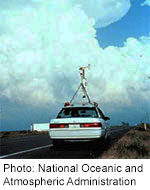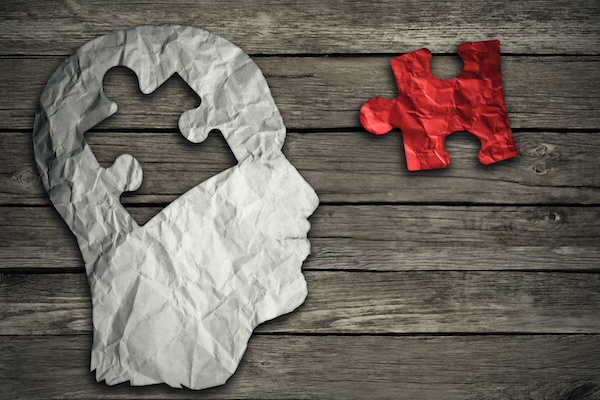
FRIDAY, May 24 (HealthDay News) — We’ve all seen them: the surfers who race to the beach when a hurricane hits, the guy who decides to ride out the storm in his overmatched boat, the tornado chasers who fearlessly steer their cars alongside a scary-looking funnel cloud.
Monday’s devastating tornado in Moore, Okla., was the most recent reminder that Mother Nature isn’t something to gamble with — that even when the best safety precautions are taken, people can still get hurt and die.
Yet, even now, when weather experts have the technology to predict potentially dangerous natural disasters far enough in advance for people to take shelter, some still sprint into the melee while the rest of us hunker down in safety.
Why?
Storm chasers, thrill-seekers and their ilk don’t fit a single personality profile, mental health experts say. Although genetics probably play a role, learned behavior and maturity are factors, too.
“They may be one of two types: people who have what we call impulsivity or those who are sensation seekers,” said Rick Hoyle, a professor of psychology and neuroscience and associate director for the Center for Child and Family Policy at Duke University.
An impulsive person tends not to think about the outcome of their actions. “They’re more in the moment,” Hoyle said. “They think, ‘I see this novel, amazing thing in front of me and I have to run toward it. I have to experience it.’ “
Sensation seekers, on the other hand, are more likely to understand the risk, but it’s worth the high they get, said Hoyle, who has conducted research on sensation-seeking behavior.
“Exposure to a novelty — what we call stimuli high in sensation value, like an incoming tornado — tends to activate the reward centers in the brains of people who are high in sensation-seeking behaviors,” he said. “In other words, they get the same high from these events that you and I would get from eating something that really tastes good or being with someone we really want to be with.”
High sensation-seekers are significantly more likely to use drugs and alcohol too, he added.
“The combination of the two — impulsivity and sensation-seeking — in one person is particularly likely to lead them into harm’s way,” Hoyle said.
Telling risk-takers that the weather they’re about to challenge is dangerous usually won’t convince them to come back inside, Hoyle added. “The more you portray it as risky and edgy, the more appealing it might be,” he said. “It’s an information processing bias.”
Some sensation-seekers may take greater and greater risks over time, said psychiatrist Dr. Emanuel Maidenberg, director of the Cognitive Behavior Therapy Clinic at the University of California, Los Angeles. “It’s called habituation. In order to achieve the same level of satisfaction they need more and more stimuli,” he said. “Their need for excitement and arousal may increase gradually over time and they may need to seek thrills of a bigger kind.”
A person might also brave a fierce storm because it brings attention, said Scott Huettel, a professor of psychology and neuroscience at Duke who has collaborated with Hoyle on research.
“Adolescents have stronger responses to rewards, particularly if an action has a social reward,” Huettel said. “They may not see their behavior as risky because it has a potential reward — maybe it will improve their social status or it’s going to help them get the girl.”
And don’t assume your typical risk-taker is the extreme athlete or the guy with the tattoos and piercings. There’s a lot of evidence now suggesting that more than one personality type is attracted to impulsive, thrill-seeking behaviors, Huettel said.
“The person who decides on a whim to jump off a sea cliff is not the same as the guy who chooses a risky career like firefighting,” Huettel said. “And people who tend to take high-risk actions recreationally aren’t necessarily as likely to do that with their investments, for example.”
Although fearlessness in the face of nature’s wrath likely has a genetic component, there are social forces at play too, said Dr. Scott Bea, a clinical psychologist at the Cleveland Clinic.
“What is interesting is that one of the most well-studied and researched storms was Hurricane Katrina,” Bea said. “Stanford and Princeton researchers looked at groups of residents who rode the storm out, residents who left, emergency workers who came in to help.”
Bea said people who weather big storms instead of escaping to safety may not be in the sensation-seeking category at all. Perhaps they have a lack of financial and social support, or they just don’t want to leave their communities.
“They embody the American working class — independent individuals,” he said. “People who don’t want to leave their homes, who want to stay close to neighbors and friends because they have a sense of obligation, like a ship’s captain.”
More information
For more on thrill-seeking behavior, visit the American Psychological Association.

